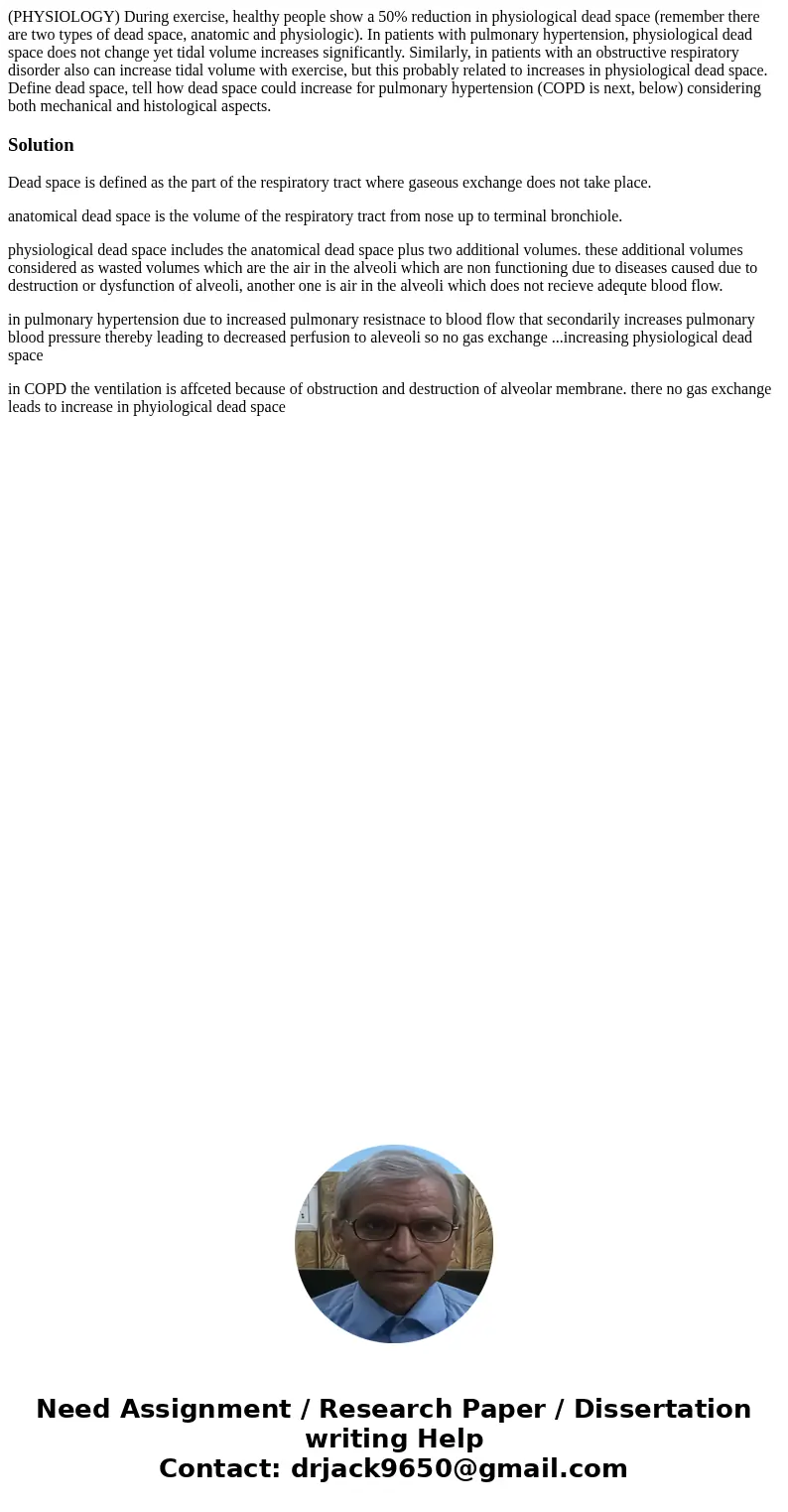PHYSIOLOGY During exercise healthy people show a 50 reductio
(PHYSIOLOGY) During exercise, healthy people show a 50% reduction in physiological dead space (remember there are two types of dead space, anatomic and physiologic). In patients with pulmonary hypertension, physiological dead space does not change yet tidal volume increases significantly. Similarly, in patients with an obstructive respiratory disorder also can increase tidal volume with exercise, but this probably related to increases in physiological dead space. Define dead space, tell how dead space could increase for pulmonary hypertension (COPD is next, below) considering both mechanical and histological aspects.
Solution
Dead space is defined as the part of the respiratory tract where gaseous exchange does not take place.
anatomical dead space is the volume of the respiratory tract from nose up to terminal bronchiole.
physiological dead space includes the anatomical dead space plus two additional volumes. these additional volumes considered as wasted volumes which are the air in the alveoli which are non functioning due to diseases caused due to destruction or dysfunction of alveoli, another one is air in the alveoli which does not recieve adequte blood flow.
in pulmonary hypertension due to increased pulmonary resistnace to blood flow that secondarily increases pulmonary blood pressure thereby leading to decreased perfusion to aleveoli so no gas exchange ...increasing physiological dead space
in COPD the ventilation is affceted because of obstruction and destruction of alveolar membrane. there no gas exchange leads to increase in phyiological dead space

 Homework Sourse
Homework Sourse